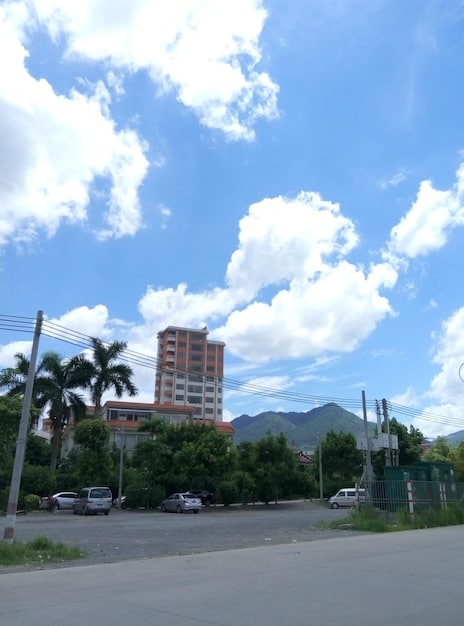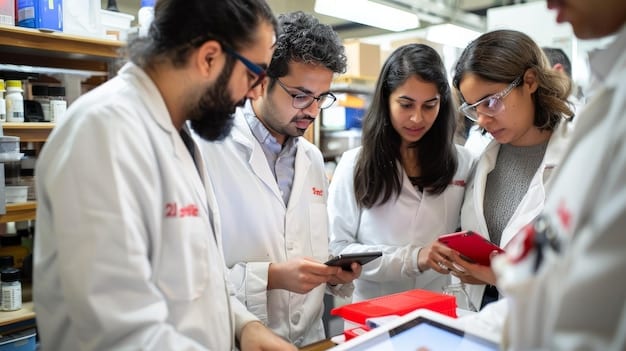Peru Healthcare Reform: Opportunities for US Pharma

Peru’s Healthcare System Overhaul aims to improve access and quality, presenting significant opportunities for US pharmaceutical companies to contribute with innovative solutions and expertise.
The Peru’s Healthcare System Overhaul: Opportunities for US Pharmaceutical Companies is a significant development that promises to reshape the healthcare landscape in Peru, opening new doors for international collaborations, particularly for US-based pharmaceutical companies. This transformation aims to address existing gaps and enhance the overall quality of healthcare services available to the Peruvian population.
Understanding Peru’s Healthcare System
Peru’s healthcare system is a complex structure comprised of both public and private sectors. The public sector, primarily managed by the Ministry of Health (MINSA) and EsSalud (social security for formal workers), covers a significant portion of the population. However, challenges such as limited resources, infrastructure gaps, and unequal access to services persist. Let’s delve into the current state of healthcare in Peru.
Public vs. Private Healthcare
The dual nature of Peru’s healthcare system presents both opportunities and challenges. The public sector struggles with funding, while the private sector caters mainly to those who can afford it.
Addressing the disparities between these sectors is a key focus of the healthcare overhaul, aiming to create a more equitable and efficient system for all Peruvians.
Key Challenges and Opportunities
Several issues plague the current system, including inadequate infrastructure, shortage of healthcare professionals, and limited access to specialized treatments. However, these challenges also highlight potential areas for improvement and investment.
- Improving infrastructure in rural areas to enhance access to healthcare services.
- Training and recruiting more healthcare professionals to address the shortage.
- Investing in technology and telemedicine to overcome geographical barriers.
The overhaul seeks to address these challenges by implementing strategic reforms, leveraging technology, and fostering partnerships with international entities.
The Healthcare System Overhaul: Key Reforms
The healthcare system overhaul in Peru encompasses several key reforms designed to modernize and streamline healthcare delivery. These reforms aim to improve efficiency, expand coverage, and enhance the quality of care available to the Peruvian population. A closer look at these reforms is crucial to understanding the potential impact and opportunities for US pharmaceutical companies.

Investment in Infrastructure and Technology
One of the primary areas of focus is the investment in modernizing healthcare infrastructure. This includes upgrading existing hospitals, building new medical facilities, and integrating advanced technologies to improve diagnostics and treatment.
This commitment to technology also extends to telemedicine, which is particularly important for reaching remote and underserved populations.
Expanding Health Insurance Coverage
Another critical reform is expanding health insurance coverage to ensure that a larger portion of the population has access to necessary medical services. This involves strengthening public insurance programs and encouraging private insurance options.
- Enhancing the Seguro Integral de Salud (SIS) to cover more individuals.
- Promoting public-private partnerships to expand healthcare access.
- Simplifying the enrollment process to reach more people.
By increasing the number of insured individuals, the demand for pharmaceutical products and healthcare services is expected to rise, creating opportunities for companies in the healthcare sector.
The reforms also include measures to improve the efficiency of healthcare administration and reduce bureaucratic obstacles. This can lead to a more streamlined and transparent system that is easier for international companies to navigate.
Opportunities for US Pharmaceutical Companies
The unfolding healthcare system overhaul in Peru presents numerous opportunities for US pharmaceutical companies. With increased investment, expanded coverage, and a growing demand for quality healthcare, US firms are well-positioned to contribute expertise, innovative products, and advanced technologies to the Peruvian market. Examining these specific opportunities is crucial for strategic planning and market entry.
Market Entry Strategies
Entering the Peruvian market requires a well-thought-out strategy. US pharmaceutical companies can explore various avenues, including direct investment, partnerships with local distributors, and participation in government tenders.
Understanding the regulatory landscape and building strong relationships with key stakeholders are crucial for successful market entry.
Demand for Innovative Medicines
There is a growing demand in Peru for innovative medicines and advanced therapies. This includes treatments for chronic diseases, oncology drugs, and specialized medications that address unmet medical needs.
- Introducing novel therapies for diabetes and cardiovascular diseases.
- Providing access to cutting-edge cancer treatments.
- Offering specialized medications for rare diseases.
US pharmaceutical companies can capitalize on this demand by introducing their latest products and participating in clinical trials to demonstrate their efficacy and safety.
Another key area is the provision of generic medicines. As the healthcare system expands coverage, there will be a greater need for affordable and high-quality generic drugs, offering another avenue for US companies.
Regulatory and Legal Considerations
Navigating the regulatory and legal landscape in Peru is a critical aspect for US pharmaceutical companies seeking to capitalize on the healthcare system overhaul. Understanding the specific regulations, compliance requirements, and legal frameworks governing the sector is essential for ensuring smooth operations and avoiding potential pitfalls. Careful navigation is paramount to success.
Understanding Peruvian Health Regulations
The regulatory environment in Peru is governed by various agencies, including the Ministry of Health (MINSA) and the National Directorate of Medicines, Supplies, and Drugs (DIGEMID). These bodies oversee the registration, import, and distribution of pharmaceutical products.
Compliance with these regulations is crucial for obtaining market authorization and ensuring product safety and efficacy.
Intellectual Property Rights
Protecting intellectual property rights is a paramount concern for pharmaceutical companies. Peru has laws in place to safeguard patents and trademarks; however, enforcement can be challenging.
- Registering patents and trademarks promptly to secure intellectual property.
- Monitoring the market for counterfeit products and taking legal action against infringers.
- Collaborating with local authorities to enforce intellectual property rights.
US companies should take proactive measures to protect their intellectual property and ensure that their innovations are not compromised.

Another important legal consideration is compliance with anti-corruption laws. US companies must adhere to both US and Peruvian anti-corruption regulations to ensure ethical business practices. This involves implementing robust compliance programs and conducting thorough due diligence on local partners.
Challenges and Risks
While the healthcare system overhaul in Peru presents significant opportunities for US pharmaceutical companies, it is equally important to acknowledge and address the potential challenges and risks associated with operating in the Peruvian market. Being aware of these challenges and developing strategies to mitigate them is essential for long-term success.
Market Access Barriers
One of the primary challenges is navigating market access barriers. This includes regulatory hurdles, bureaucratic delays, and pricing pressures. Understanding these barriers and developing strategies to overcome them is essential for gaining a foothold in the market.
Building strong relationships with local stakeholders and engaging in proactive advocacy can help in navigating these challenges.
Political and Economic Instability
Political and economic instability can pose significant risks to businesses operating in Peru. Changes in government policies, economic downturns, and social unrest can impact the business environment.
- Conducting thorough risk assessments to identify potential threats.
- Developing contingency plans to mitigate the impact of adverse events.
- Diversifying investments to reduce exposure to specific risks.
US companies should closely monitor the political and economic landscape and adapt their strategies accordingly.
Another challenge is the need to adapt products and services to the local context. This includes tailoring marketing strategies to the cultural nuances of the Peruvian market and ensuring that products are affordable and accessible to the target population.
Case Studies: Successful US Pharma in Latin America
Examining successful case studies of US pharmaceutical companies operating in Latin America can provide valuable insights and lessons for those looking to enter the Peruvian market. These examples demonstrate the strategies, approaches, and best practices that have proven effective in navigating the region’s unique challenges and opportunities. Learning from these successes is invaluable.
Pfizer in Brazil
Pfizer’s success in Brazil is attributed to its strategic partnerships with local distributors and its commitment to investing in research and development. The company has successfully introduced innovative medicines and expanded its market share through targeted marketing campaigns.
Pfizer’s experience highlights the importance of building strong relationships with local stakeholders and adapting products to meet local needs.
Johnson & Johnson in Mexico
Johnson & Johnson has a strong presence in Mexico, driven by its diversified product portfolio and its focus on corporate social responsibility. The company has invested in community health programs and partnered with local organizations to improve healthcare access.
- Diversifying product offerings to cater to a wide range of healthcare needs.
- Investing in community health programs to enhance brand reputation.
- Partnering with local organizations to improve healthcare access.
Johnson & Johnson’s success underscores the importance of a holistic approach that combines business objectives with social impact.
These case studies demonstrate that success in Latin America requires a long-term commitment, a deep understanding of the local market, and a willingness to adapt to the cultural and regulatory environment.
| Key Point | Brief Description |
|---|---|
| 🏥 Healthcare Overhaul | Major reforms to modernize Peru’s healthcare system. |
| 💰 Investment Opportunities | Significant prospects for US pharmaceutical firms. |
| 💊 Demand for Medicines | Growing need for innovative and generic drugs. |
| ⚖️ Regulatory Compliance | Navigating and adhering to Peruvian health regulations. |
Frequently Asked Questions (FAQ)
▼
The primary goal is to improve the accessibility, quality, and efficiency of healthcare services for all Peruvians by modernizing infrastructure and expanding coverage.
▼
Opportunities include supplying innovative and generic medicines, participating in infrastructure development, and offering advanced healthcare technologies and expertise.
▼
Key considerations include compliance with MINSA and DIGEMID regulations, protecting intellectual property rights, and adhering to anti-corruption laws and ethical standards.
▼
Challenges include navigating market access barriers, dealing with political and economic instability, and adapting products to the local context and cultural sensitivities.
▼
Success can be ensured through strategic partnerships, local market knowledge, compliance with regulations, and a commitment to social responsibility and sustainable business practices.
Conclusion
The Peru’s Healthcare System Overhaul: Opportunities for US Pharmaceutical Companies are abundant, offering a chance to contribute to the improvement of healthcare in Peru while expanding business horizons. By understanding the landscape, navigating the challenges, and leveraging their expertise, US pharmaceutical companies can play a significant role in shaping the future of healthcare in Peru.





